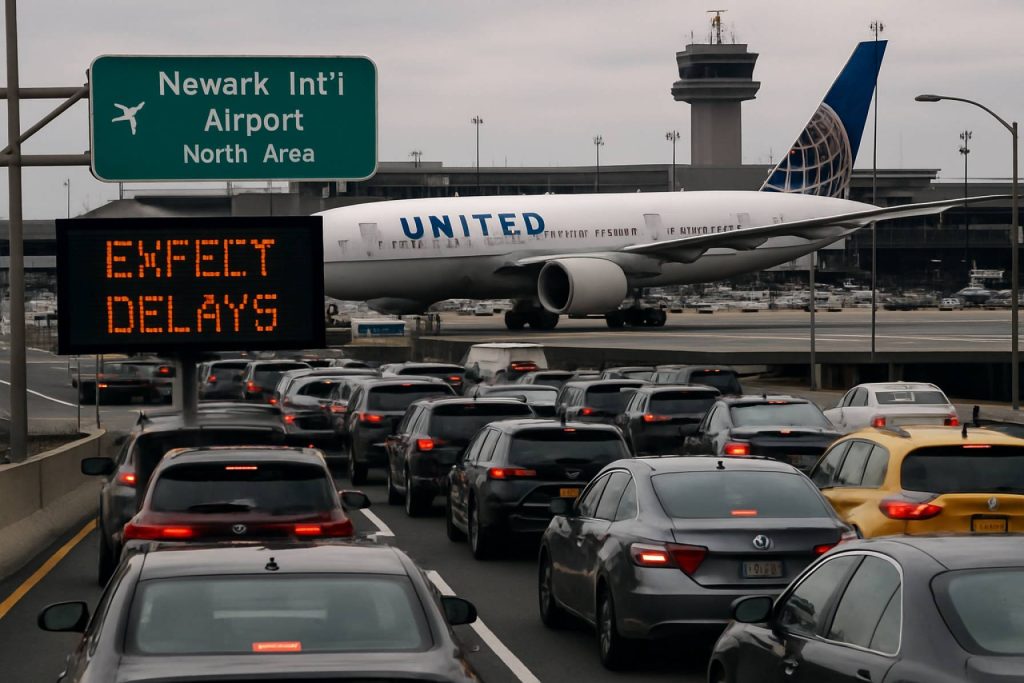
- FAA limits Newark Airport to 28 arrivals and 28 departures per hour—down 28%—due to technology failures and staffing issues.
- A series of radar and radio outages since April 28 have shaken controller confidence, resulting in trauma leave for up to seven staffers.
- Construction on the airfield intensifies disruptions, leading to hundreds of cancellations and delays for summer travelers.
- The flight cap is in place at least through June 15; if conditions improve, it may rise to 34 per hour, but further cuts are possible depending on staff and tech stability.
- United Airlines has preemptively canceled 35 daily flights; overall, travelers face fewer options and higher competition (and likely prices) for seats this summer.
Travelers racing to catch summer flights from Newark Liberty International Airport have found an unexpected snag: a sharp reduction in scheduled arrivals and departures, echoing across departure boards and travel itineraries alike. The Federal Aviation Administration (FAA) has drawn a firm line—only 28 arrivals and 28 departures per hour, at least through June 15. That’s a 28% drop from Newark’s typically bustling pace.
This is no ordinary squeeze. A now-infamous series of technological failures started on April 28, when air traffic controllers near Philadelphia lost vital radar connections. For ninety excruciating seconds, pilots and controllers found themselves flying blind. Another breakdown followed closely on May 9, leaving nerves frayed and trust shaken. As if on cue, a third glitch struck May 11, though backups kept disaster at bay. Even a two-second radio outage on the following Monday kept the tension high—reminders that modern aviation depends on invisible threads that can snap without warning.
The human toll soon followed. Up to seven air traffic controllers, rattled by the breakdowns, were granted a 45-day trauma leave. Their absence hit hard, compounding Newark’s chronic staffing shortages. Add to that ongoing construction on the airfield, and the result was painfully predictable: hundreds of cancellations and delays banks of frustrated passengers waiting beneath glowing screens.
Officials sprang into action, capping traffic at 56 flights per hour—dramatically down from the frenetic pace New Yorkers are used to. That limit, now extended until mid-June, turns the airport’s competitive energy into orderly queues, with airlines picking and choosing which flights to axe.
- What happens after June 15? If construction wraps up and controllers return, the cap could notch up to 34 departures and arrivals per hour. Yet, the FAA warns: further cuts might loom, depending on technology and staffing realities.
- Who’s easing the crunch? United Airlines, for one, has already scrapped 35 daily flights—a bid to preempt mayhem and slim down the gridlock.
- How does it affect travelers? With fewer seats and flights, competition—and prices—for every available itinerary will surely intensify. The inconvenience may ripple beyond Newark, impacting air traffic across the region.
For now, the race to restore normalcy remains high-stakes. But as digital systems are scrutinized and trauma-stricken crews regain their confidence, Newark’s travelers are left to navigate a summer of uncertainty—albeit, with a little extra patience in their carry-ons.
Newark Airport Chaos: Is the Flight Cut Helping or Hurting Travelers?
-
Pros
- Improved safety: By capping flights per hour, the Federal Aviation Administration reduces stress on staff and prevents potentially catastrophic mistakes after recent radar and radio malfunctions.
- More manageable flow: Orderly queues and reduced congestion help air traffic controllers and ground staff operate more efficiently during staff shortages.
- Time for fixes: This slowdown buys time for critical upgrades and trauma recovery without exposing travelers and staff to undue risk.
-
Cons
- Disrupted travel: With 28% fewer flights, many passengers face cancellations, rescheduling headaches, and possible missed connections.
- Higher airfares: Airlines like United Airlines are reducing available seats, which may raise prices for the flights that remain.
- Regional impact: Delays, cancellations, and crowding may ripple beyond Newark and affect the entire northeast corridor’s travel.
-
Controversies & Limitations
- Lingering trust issues: The string of tech malfunctions and subsequent trauma leave for air traffic controllers have shaken public confidence in aviation safety protocols enforced by the FAA.
- Temporary fix? The current flight cap is only guaranteed through June 15, but uncertainty over staffing, technology, and construction may cause further cuts or chaos.
- Lack of alternatives: Limited flexibility means that travelers and airlines must simply bear the brunt of the disruption until normalcy is restored.
Air Travel Shake-Up: What’s Next for Newark and U.S. Airports?
-
Persistent Flight Caps and Evolving Schedules
Experts forecast that the Federal Aviation Administration may continue using flight caps and dynamic scheduling through 2024, especially whenever unexpected technology failures or staffing gaps occur. These temporary policies could pave the way for new approaches to congestion management at major U.S. airports.
-
Investment Surge in Aviation Technology
Following recent outages, there’s huge pressure for robust, fail-safe digital systems. Anticipate multi-billion dollar investments by the FAA and increased collaboration with airline partners to modernize radar, radio, and backup communication infrastructure by 2026.
-
Focus on Mental Health and Workforce Stability
The impact on air traffic controller morale has broadcast the need for trauma support and better working conditions. Future trends point to the adoption of dedicated mental health programs and targeted hiring initiatives to stabilize the workforce and prevent further staffing crises.
-
Rising Prices and Shifting Travel Patterns
With airlines like United Airlines trimming schedules, expect intensified competition for seats, higher ticket prices, and travelers choosing secondary airports or alternative routes—potentially driving long-term shifts in U.S. air travel patterns.
-
Construction-Driven Redesigns of Airport Infrastructure
Ongoing airfield upgrades at Newark and other hubs will influence how terminals and taxiways are redesigned nationwide. Over the next 3–5 years, anticipate fresh layouts aimed at both enhancing passenger experience and streamlining air traffic flows.
-
Closer Federal-Airline Coordination on Crisis Response
The crisis is likely to spark lasting partnerships between the FAA and top carriers, focusing not only on safety but also on data sharing, dynamic schedule planning, and joint emergency drills.



